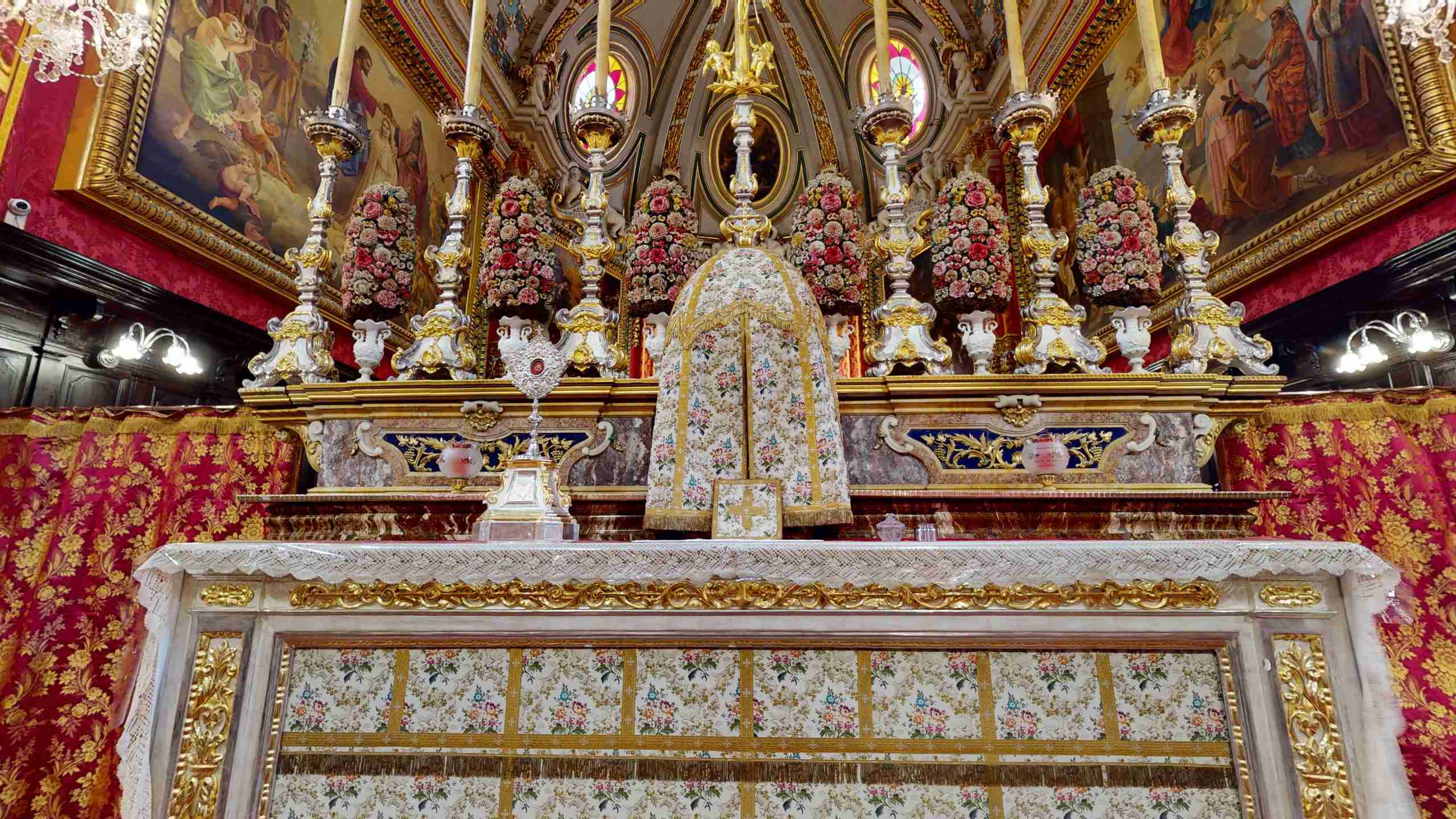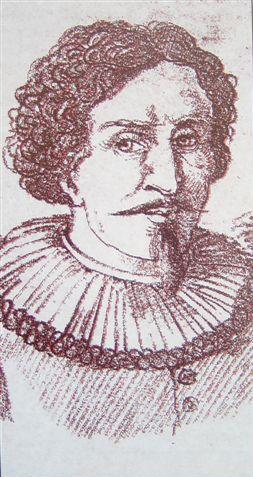
WELCOME!
to
The Church of The Nativity of The Virgin Mary

The first sure surviving examples of good Baroque art in Naxxar date to the very late seventeenth or early eighteenth century and come with the decorative programme for the newly-constructed choir end of the parish church. The structural works, traditionally held to have been designed by Lorenzo Gafa` (1639-1703), were terminated by 1691 but the titular painting of The Nativity of the Virgin and the two large laterals of The Adoration of the Magi and The Flight into Egypt were only put in place between 1699 and 1709.
TITULAR PAINTING – THE NATIVITY OF OUR LADY
 The altar painting of the NATIVITY OF THE VIRGIN, is attributed to Guiseppe d’Arena. Datable to c. 1705, it is wonderfully composed and executed at a high level of finish throughout. The painting encompasses Pretian modes with a manner that remarkably anticipates mid-eighteenth century works in Malta.
The altar painting of the NATIVITY OF THE VIRGIN, is attributed to Guiseppe d’Arena. Datable to c. 1705, it is wonderfully composed and executed at a high level of finish throughout. The painting encompasses Pretian modes with a manner that remarkably anticipates mid-eighteenth century works in Malta.
D’Arena is not known to have replicated or copied Preti’s work, even though it can be presumed that he did. In any case he did make numerous conscious citations of Preti’s works and frequently took figures directly from the master’s compositions and placed them in his own works.
Preti’s influence is particularly manifest in the rendition of the closely knit, low-lying group of maidens attending the new-born child in the immediate distance. Their monumental muscular stance, mannerisms, and clothing recall the typical female Pretian type. The rendition of the cherubs and putti hovering above the scene amidst billowing draperies and open architecture will, on the other hand, later reappear in the work of Francesco Zahra (1710-73). Compositionally, the work is well structured with a recession of planes and a background bedroom scene well integrated through the architectural setting. A bright palette illuminates the work. It is not clear whether an archival record dated 1700 for an unspecified but remarkably expensive painting costing 150 scudi refers, as probable, to this painting.
Credit: http://www.bambinanaxxar.org/
Please go to http://www.bambinanaxxar.org/2010/03/final.html for much more interesting information about the amazing treasures of this beautiful church.

Tommaso Dingli, one of Malta’s final Renaissance architects, was born in Attard on December 22, 1591. He was the son of Giacobo Dingli, a sculptor, and his wife Katerina Dingli, née Tabone. He was one of 10 children; one of his brothers was the artist Filippo Dingli. He was the fourth kid. Along with his father Giacobo and his uncle, the engineer Andrea Dingli, Dingli started his profession as a scarpellino (stone carver).
Dingli began his career as an architect by assisting Giovanni Attard, a capomastro (master builder), during the years of 1610 and 1614 while he built the Wignacourt Aqueduct. Dingli received numerous commissions and created a number of parish churches in subsequent years. Dingli is credited with creating the second Porta Reale, Valletta’s main city gate, in 1633.
Dingli rebuffed Giovanni de’ Medici’s offer to accompany him to Italy in 1639 after being impressed by his prowess and learning that Malta needed his services. Dingli, who had designed the Attard parish church, was buried there after passing away on January 28, 1666, at the age of 74.
The majority of Dingli’s churches were constructed in the Renaissance architectural style, which may have been influenced by Spanish Plateresque. He was one of Malta’s final Renaissance architects, and in the years following his passing, the Baroque style rose to prominence.
Dingli is most recognized for his work on churches. He is credited with designing several churches, including:
Parish Church of St. Mary in Birkirkara – probably in collaboration with other architects
Parish Church of the Assumption in Mosta
Parish Church of St. Mary in Attard
Parish Church of the Nativity of Mary in Naxxar
Parish Church of St. Bartholomew in Għargħur
Parish Church of Our Lady of Grace in Żabbar
Parish Church of St. Philip of Agira in Żebbuġ – in collaboration with other architects
Church of the Madonna tal-Għar at Rabat
Sacristy of St. Paul’s Cathedral in Mdina
Most of these were altered or destroyed in subsequent centuries, for example the Mosta parish church was demolished in the 19th century to make way for the Rotunda of Mosta. Only the Birkirkara and Attard parish churches still retain Dingli’s original design.
Other buildings attributed to Dingli include the Bishop’s Palace and the second Porta Reale, both in Valletta. The latter was demolished in 1853.
Dingli married Argenta Dingli from Siġġiewi when he was 60 years old. They had six children, one of whom became a priest.